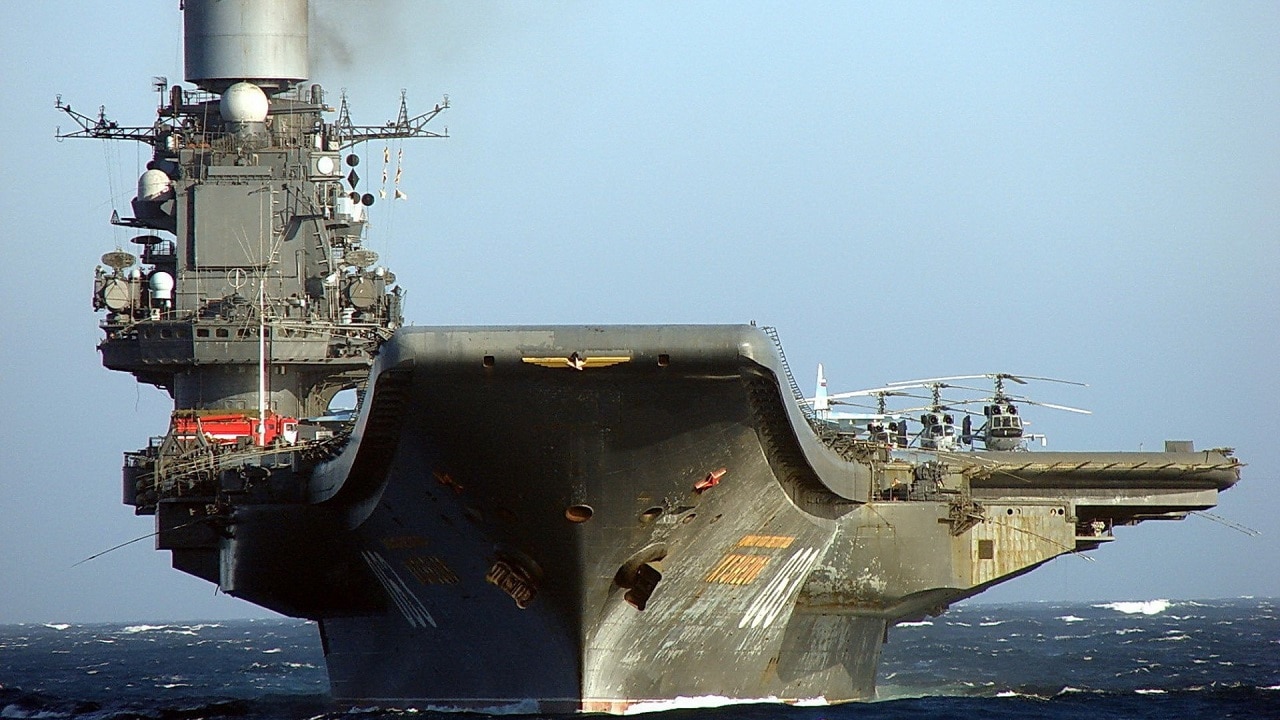Russia has just one aircraft carrier and she has a tortured past, to say the least: It’s back to the shipyard again for Russia’s only aircraft carrier, the Admiral Kuznetsov. Repairs and refits are a common refrain for the cursed carrier that has endured major deadly mishaps over the years. A Russian state-run media report on March 22 said the ship will be sent to a repair facility in April. This means the carrier is likely to miss a significant part of the war in Ukraine depending on how long the conflict lasts. Some think it may never sail again.
Major Work to Be Done
The Admiral Kuznetsov will head to the 35th Plant in Zvyozdochka – Russia’s largest shipyard in Murmansk in northwest Russia. Work will not be done until September. The major issues with the carrier are its steam turbines and arrestor cables. At a minimum, eight boilers will have to be replaced due to problematic pipes inside the boilers.
Dmitry Gorenburg, a senior research scientist at the CNA think tank, was interviewed by Business Insider. “The main problem with the ship is that is has a very problematic propulsion system,” Gorenburg said. “It’s just unreliable.”
Syria Deployment Becomes Another Downer
The Kuznetsov had a chance to rebuild its reputation during Russia’s intervention in Syria.
It deployed to the eastern Mediterranean in October of 2016. First reports were positive as the Russians crowed that the carrier launched over 400 sorties including night missions. But then the problems with arrestor cables cropped up and the Kuznetsov lost two airplanes, including a Su-33 Flanker, when an arresting wire broke upon landing.
A Myriad of Problems
By 2018, the aircraft carrier was assigned to drydock to address these problems. Bad luck struck when the dry dock sunk. This resulted in a damaged hull.
That wasn’t all. A crane on the drydock smashed into the ship and created a major hole. This killed one worker and hurt four others. It was estimated that these repairs would cost a billion dollars.
More Fatal Occurrences
In 2019, two others died due to an electrical fire in the engine room sparked by a welding accident. Repairs were going to cost another billion dollars for that tragedy. Ten years earlier another fire killed a sailor. There was also a major oil leak in Ireland that year. The ship was so faulty that it often needed a repair ship and tugboats to escort it during deployments.
Black Smoke Looks Terrible
Another embarrassment for the Admiral Kuznetsov is that it belches out black smoke from its propulsion system. The ship runs on a black, sticky tar-like petrochemical fuel called Mazut. The Mazut sent into the combustion chamber does not combust fully. This partial burn results in black smoke.
Russia’s Only Aircraft Carrier: Destined for Retirement?
It seems like the Russians should just give up on the Kuznetsov and start again with a nuclear-powered carrier. But the Russian ship procurement system, known for its cost overruns and schedule slips, would probably have difficulty with anything that ambitious.
It’s also must frustrate the Russian naval command that its only carrier is not sea-worthy enough to deploy in the current war in Ukraine. This would add a carrier air group to the fight. Without the Kuznetsov, Russia will have to depend on corvettes, guided missile cruisers, and submarines firing stand-off missiles.
As it stands now, the carrier won’t be ready until at least the fall of this year and that’s if the upgrades, repairs, and modernization efforts go according to plan. But nothing can be taken for granted with the Kuznetsov, a bucket of bolts that has tested the patience of the Russian navy.
Now serving as 1945’s Defense and National Security Editor, Brent M. Eastwood, PhD, is the author of Humans, Machines, and Data: Future Trends in Warfare. He is an Emerging Threats expert and former U.S. Army Infantry officer. You can follow him on Twitter @BMEastwood.

